The Comtesse recently finished her PhD (woohoo! Dr Comtesse!), and as her PhD celebration party, she threw a historical dinner.
Her PhD was in a STEM field, not history, but, as her advisor joked, in researching and planning the dinner she found “an extremely unique way to procrastinate.” I got to know the Comtesse through her love of costuming, and one of the things I really think is fantastic about the historical costuming community is that we do come from all sorts of backgrounds and fields.
For the dinner she requested that everyone wear historical dress from a period before WWI. I think we did rather well:
The Sewphist borrowed my 1813 Kashmiri gown, and Madame Ornata sewed right up until the last moment on a mid-19th century plaid dress with a little draping and construction advice from me. She still needs to figure out a bertha, but so far it is looking amazing, and definitely got the most attention on the night!
(I just love that photo – it looks like a movie poster. Probably for a fabulously dreadful historical murder mystery!)
I wore my just-finished-but-for-the-last-four-buttons medieval gown:
The Comtesse was busy planning the dinner and researching and testing dishes, so she just rented a dress, but she made the most fabulous necklace based on one owned by Marie Antoinette (I think. Possibly Josephine) which I sadly failed to get a good photograph of before the clasp got stuck and we had to switch it out. She also found a miniature ship for her hair, and I did my best at styling it as a 1770s stormy sea-scape.
Before dinner there was a Victorian punch with tea and redcurrant jelly (and champagne AND brandy for almost everyone but me) and period parlour games:
After aperitifs and nibbles we sat down to eat:
The first course was poree blanche, a medieval vegetable soup.
I think many of us were slightly worried about the food, but the soup reassured us: it was delicious. Delicate but flavourful, with hints of nutmeg, cinnamon and ginger. I need the recipe!
The next course was the Victorian version of Salmagundi, a salad of meat and dressed vegetables that originated some time in the 17th or 18th centuries.
The plat principal was a variety of meat and vegetable dishes which you could select as you preferred, served on a medieval trencher.
I passed on the rosbif, but made a liberal selection of frumentie (soooooo delicious!), Macedoine de legumes (quite nice, but not something I’d make myself) and carrots glazed with honey, plus the sauces that accompanied the rosbif.
And then I forgot to take a picture before I’d devoured the sauce verte and ruined the picturesque effect!
Following the mains there was a cheese platter which I failed to photograph, being too involved in chevre inspired happiness, and then we moved on to dessert. Mmmmm…dessert….
Dessert was a bûche de Noël with espresso cream filling.
Being quite full from all the previous courses, and knowing that I’m not actually the biggest dessert eater, I only took half a piece, and then had to ask for the second half once I’d gobbled up the first half and looked longingly at everyone else still eating theirs! It was SO good.
But wait. There’s more!
Following dessert there were digestifs: true mince pies (with meat, spices, and fruit) following Mrs Beeton’s recipe, fleurs confites (violets, rose petals, and lavender), and hypocras.
As a pestatarian teetotaller, I only engaged in the fleurs, finding the violets to be lovely, the rose petals too papery (though they were extremely popular with everyone else around me), and the lavender to be sensational. I now want to add sugared lavender to EVERYTHING I make!
There were period drinks served throughout the dinner as well: herbed wines to match the courses, and for the non-drinkers, a lemon-barley drink based off of an original Victorian recipe. As someone who thoroughly disliked the lemon-barley cordial sold in shops in NZ, I was dubious, but it was delicious (though after about 11 glasses, I began to feel the definite effects of consuming about 700 times more sugar than I usually do in a day!).
The whole dinner took over 3 and a half hours. We sat down to eat shortly before 7:30, and did not stand up again until 11.
After dinner those in corsets were definitely feeling the strain, but my medieval gown had plenty of room for more!
We still had enough energy for a quick photo session:
And for costume discussions and show offs:
It was a THOROUGHLY amazing experience. I don’t know when the last time I sat down to a 7 course, four hour meal was, and each course was delicious, and the company thoroughly delightful. I am so inspired!
Congratulations and thank you to the Comptess!


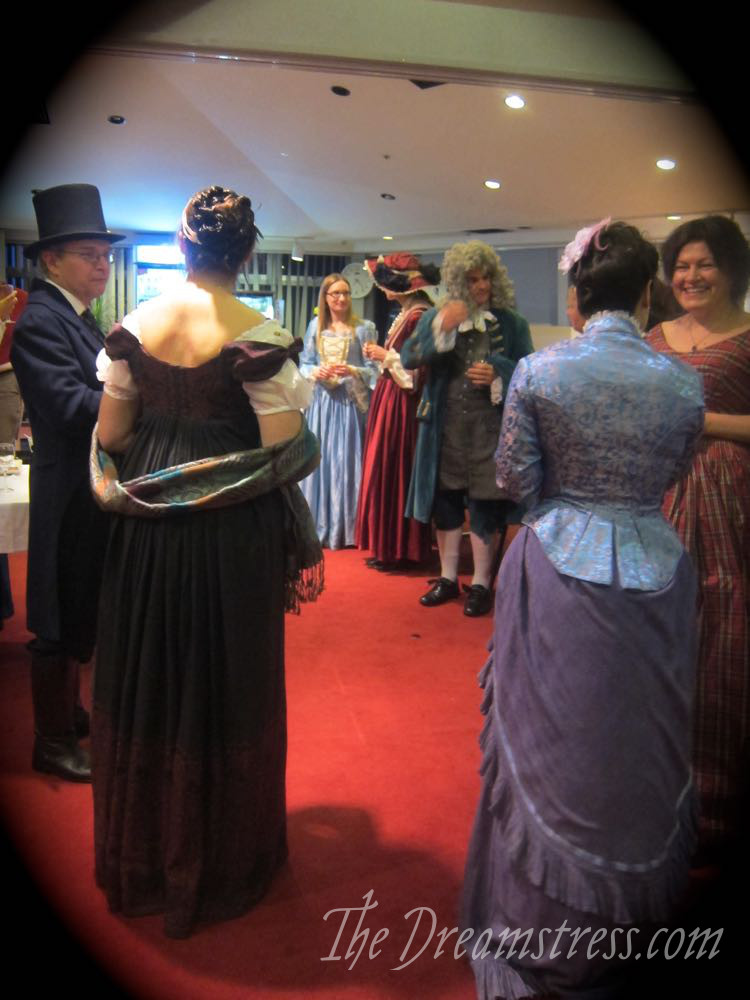
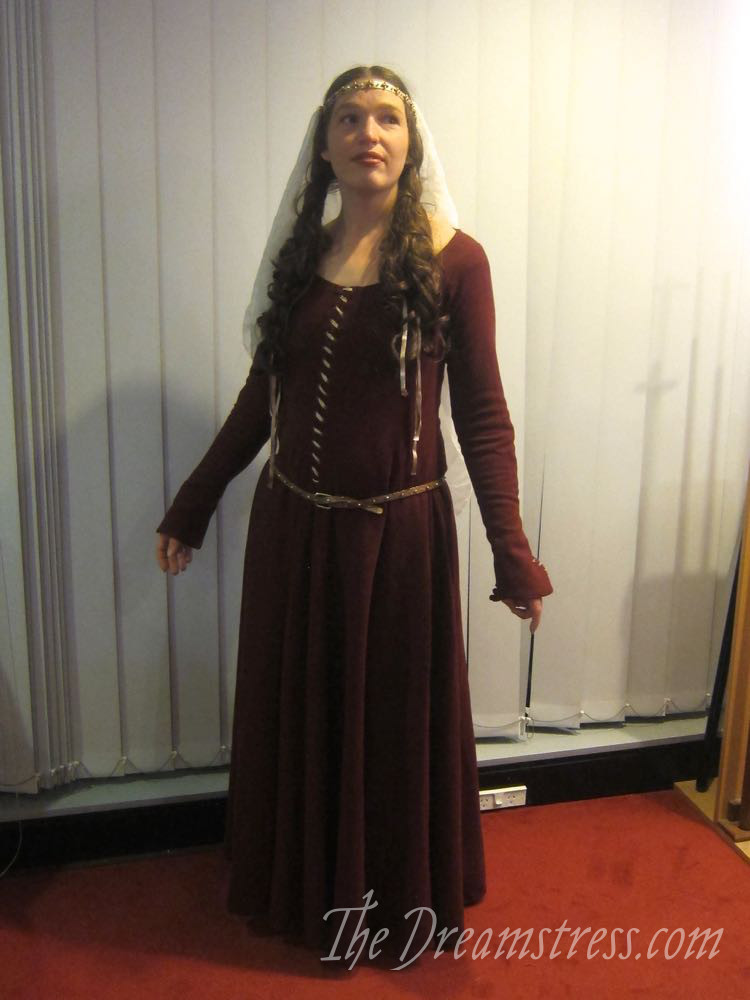

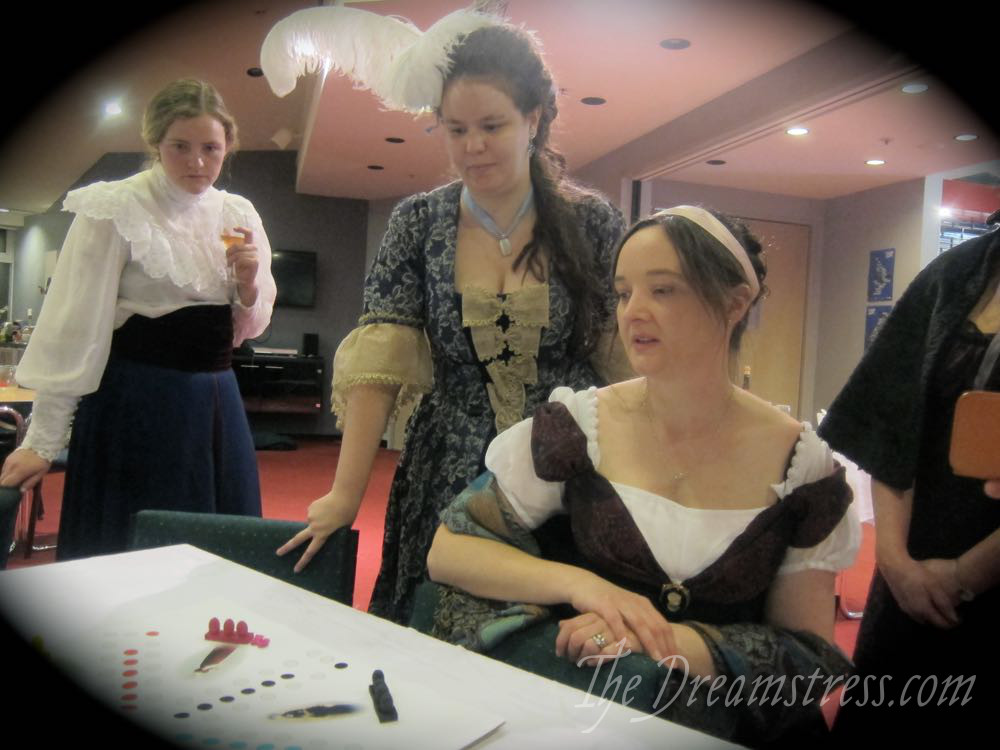

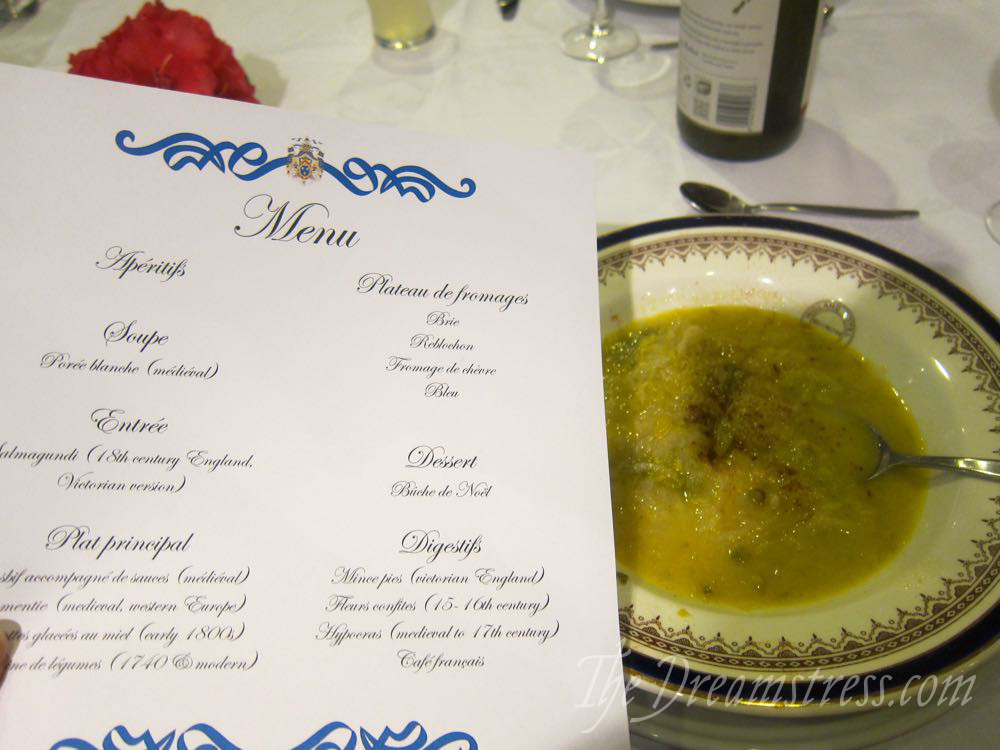

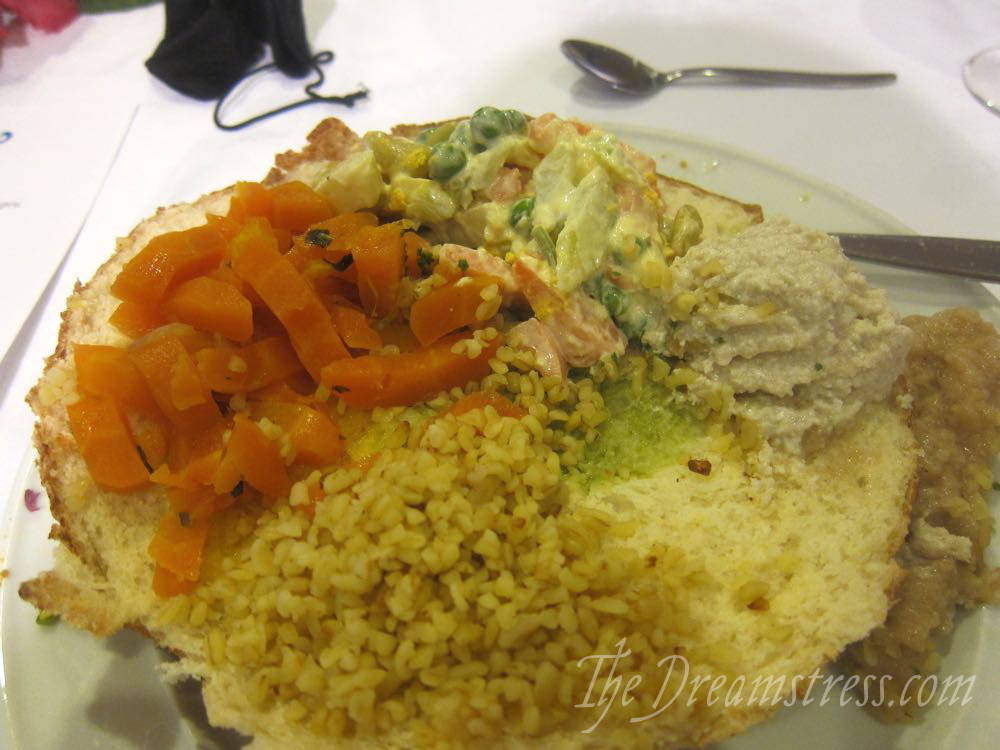

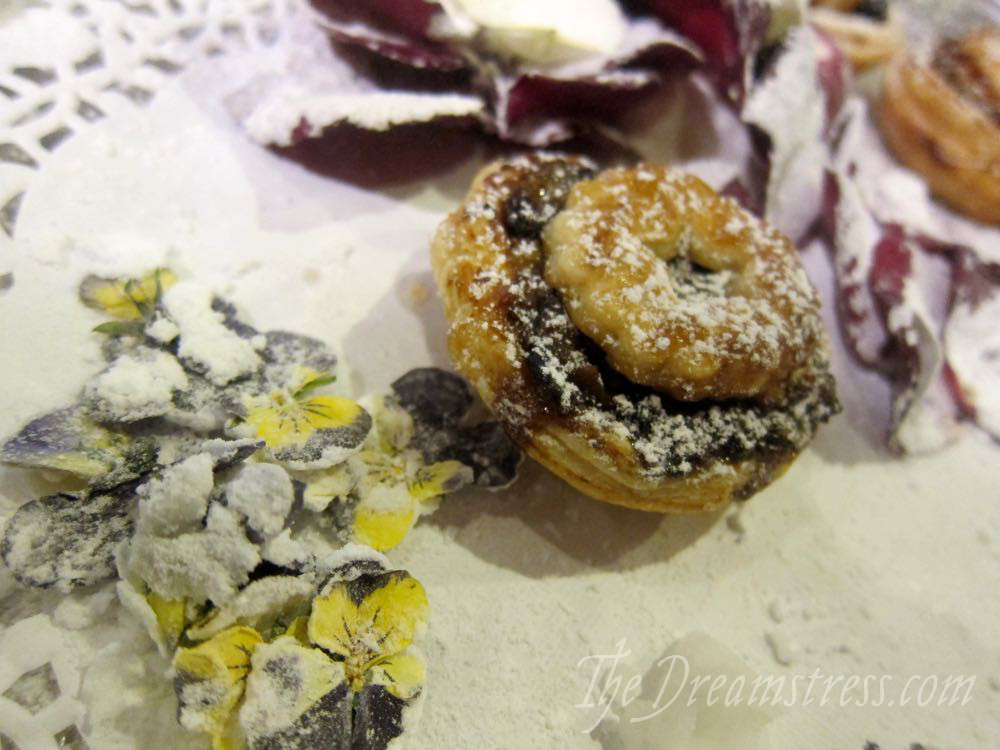
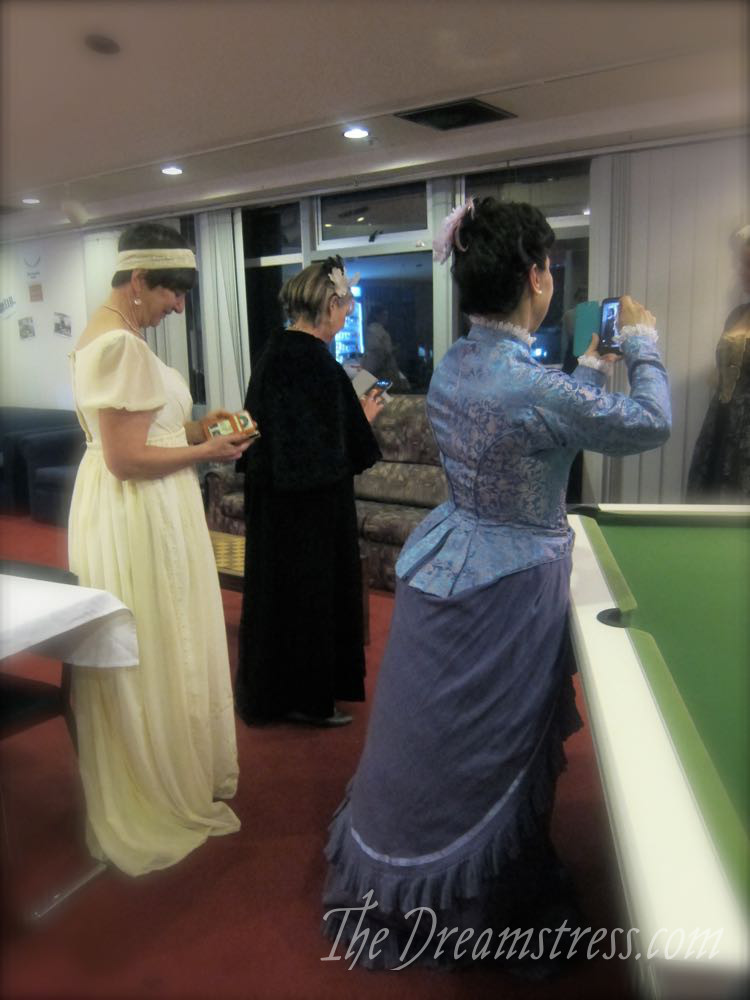
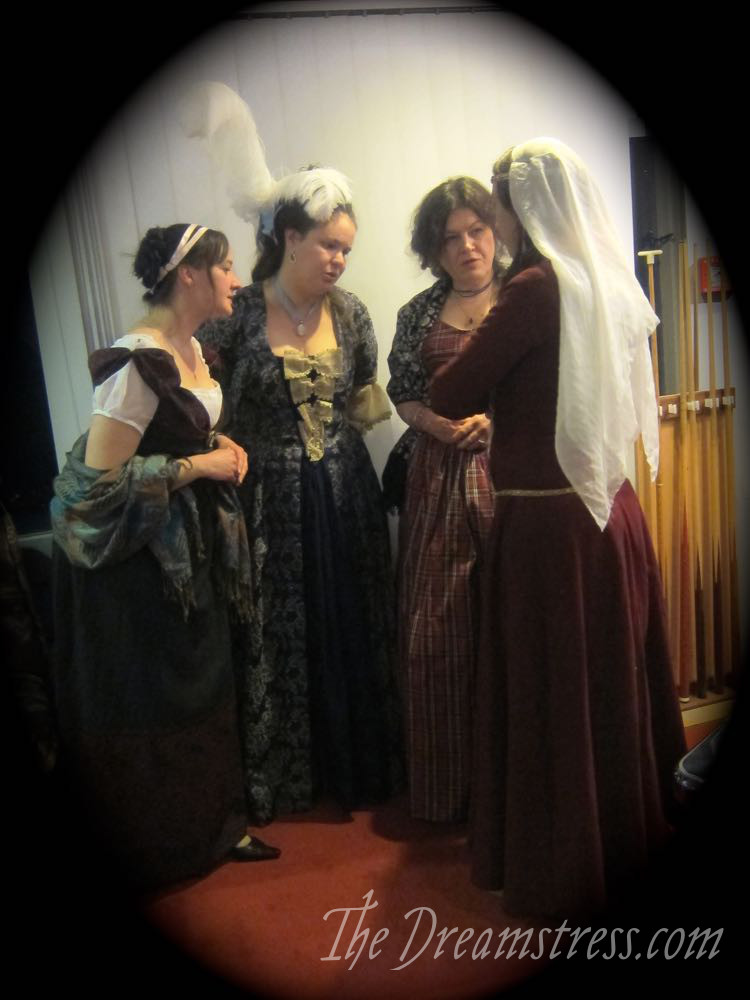
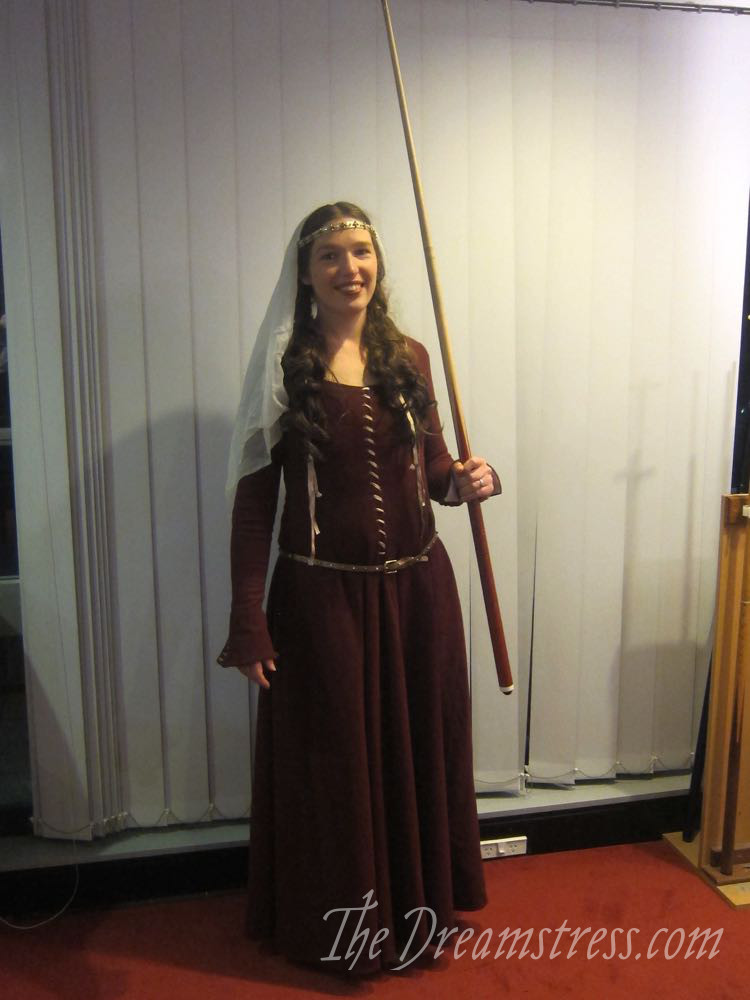
It sounds both fun and delicious and I’m sorry I wasn’t there to represent Vikings. 😉
Me too! I was set holding the fort for the earlier periods. I tried to convince the Sewphist to wear my pallas and stola instead of Regency, but she wasn’t having it. I bet some of the people in corsets wished they were in Viking or Roman wear by the end!
Viking wear, even with all the bling, *is* wonderfully comfortable and I’m very glad of that.
It was fortunate that you’d just finished making a medieval gown with close-fitting sleeves. I once attended a medieval feast wearing a bliaut, and it was a royal pain making sure I kept my sleeves out of the meal.
Sounds wonderful!
A recipe for your lavender collection. A friend of mine used to make these to serve with home-made lavender ice-cream. The biscuits are lovely with a cup of tea, too.
LAVENDER COOKIES
2 oz butter, unsalted
Cup caster sugar
1 egg, lightly beaten
1 ¼ cup self rising flour
1 tbsp lavender florets
Non stick baking paper
Preheat oven to 350. Cover baking sheet with baking paper.
Cream butter and sugar. Add egg and beat together. Mix in flour and flowers.
Place scant teaspoonfuls of the dough on the baking paper. You should fit up to 20 on a baking sheet. They spread a little, but shouldn’t travel too much. If they do, add a tad more flour.
Bake for around ten minutes, and take out the moment they start to show the slightest gold colour. They are supposed to look anaemic, and won’t feel crisp to the touch until they are cooled.
Store in an airtight container. They will keep fresh for several days.
Makes up to 80 smallish cookies.
Oooh, those sound yummy! I’m making nut cookies tomorrow. I wonder if I could make them lavender nut cookies, of if that is just gilding the lily…
I think walnuts would go well with the Lavender Cookies, myself. 🙂
Might have to wait until summer – dried lavender will be much stronger and a little more haystack. But I see no reason not to add nuts. Many a lily has responded well to a little gilding.
Wow! I’m planning a dinner party at the moment, three courses with matching wines. Looks very pedestrian………
Fabulous gowns, all that excellent sewing talk as well. Perfect night out!
Oh wow, what a wonderful time!
I’m totally bookmarking this as inspiration for my (eventual) historical dinner party.
And of course congratulations to your friend, that’s quite the accomplishment!
Ooooooooh. That is all.